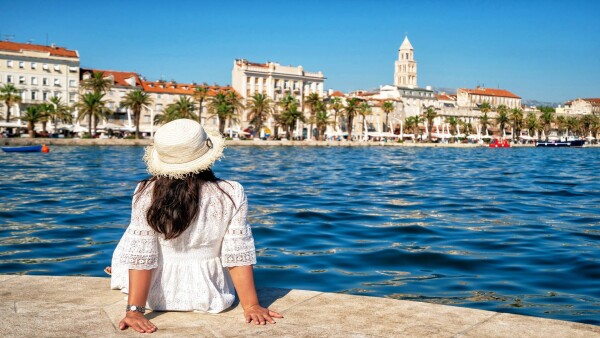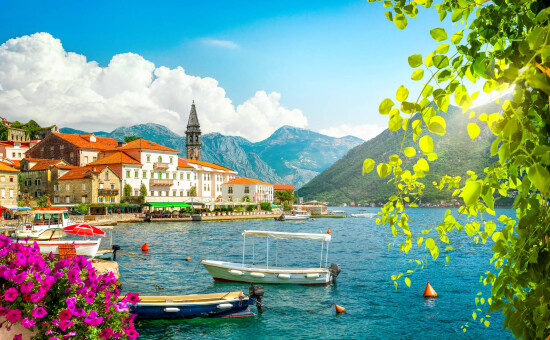A how-to guide for entering Croatia during the pandemic
Calling all travelers! Croatia wants visitors back. Entering Croatia is easy since you can choose from several methods to prove that you’re COVID-19 negative.

Check your passport’s expiration date and pack your bags—Croatia is welcoming tourists back. In fact, Croatia is among the earliest countries to invite foreigners back despite the pandemic, labeling tourism a pressing reason when they opened their border to residents from many parts of the world in the summer of 2020. But it might get you wondering: Is Croatia safe for tourists?
Croatia is safe for tourists given their COVID-19 preventative measures. However, as the story seems to go with all things COVID-19 related, the policies for entering Croatia have evolved since 2020. We’ll get you caught up on the latest Croatia COVID entry requirements so that you can get basking beneath the Balkan sun.
Who’s allowed to enter Croatia?
If you’re traveling through Schengen countries, you might be wondering—can I enter Croatia with a Schengen visa?

Anyone arriving from a Schengen country can enter Croatia provided that they show an EU Digital COVID Certificate. This applies to both Schengen and non-Schengen residents.
If you don’t have a digital certificate, you can still enter Croatia but will need to prove that you’re entering COVID-free. You have several options to choose from for doing so, which we’ll cover next.
Furthermore, if you’re traveling from certain countries that the Croatian Institute of Public Health has deemed higher risk, you’ll need to provide a negative COVID test and may have to undergo quarantine, even if you have an EU Digital COVID Certificate.
For example, people traveling from Great Britain, Cyprus, India, and Russia must present a negative PCR test under 72 hours old or a negative rapid antigen test under 48 hours old. Furthermore, if you’re traveling from Brazil, South Africa, or Zanzibar, you’ll need a negative PCR test no older than 48 hours, and you’ll have to self-isolate for two weeks.
What kinds of documents will immigration request upon your arrival in Croatia?
If you don’t have an EU Digital COVID Certificate, you can still enter Croatia. However, upon your arrival at the border, you’ll need to show proof that you’re COVID-free by presenting documents according to one of the following cases:
- Vaccination certificate
- Proof of already having had and recovered from COVID-19
- A negative PCR test taken no later than 72 hours before you arrive in Croatia, or a rapid antigen test taken within 48 hours before your arrival
If you want to enter Croatia from the US or another country that issues paper vaccination cards instead of digital ones, Croatia will accept it provided that it indicates a European Union-approved vaccine. Examples of EU-approved vaccines include Pfizer, Moderna, Johnson & Johnson, and AstraZeneca.
Alternatively, you’re allowed to arrive in Croatia without any documents showing your COVID status. In that case, you’ll need to take a COVID-19 test at your expense immediately upon setting foot on Croatian soil. From there, you’ll be responsible for quarantining until you receive your results back (and they have to be negative, of course!).
You’ll also need to fill out an Enter Croatia form before arriving. If you’re reading this the day of your arrival, don’t worry—there isn’t a timeframe for when you need to complete the form before you pass through immigration. In the event that you make a mistake on it, you’ll need to fill out a new one, as the system doesn’t permit changing incorrect data.
The nitty-gritty details of Croatia’s COVID-19 entrance requirements
Croatia COVID restrictions are relatively lenient in terms of allowing travelers into their country. Nevertheless, you should keep the following in mind to avoid a surprise at the border:
- If you opt to use a rapid antigen test (RAT), the test must comply with the European Union’s accepted RAT list.
- If you had COVID, you need to show either a medical certificate or a positive PCR or rapid antigen test. These documents must be between 12 – 270 days old.
- You must be prepared to self-quarantine for an extended period if you take a COVID-19 test upon your arrival and test positive.
Do you work remotely? Consider getting a Digital Nomad visa
People traveling to Croatia with a Digital Nomad visa are exempt from the COVID-19 requirements listed above. Launched in January 2021, the Digital Nomad visa is Croatia’s attempt to entice remote workers to choose their country to live in long-term.

Admittedly, the word “visa” is misleading—the document is really a residence permit. Most visitors are allowed to spend up to 90 days in Croatia with a standard tourist visa. By applying for a Digital Nomad visa, you’ll be able to spend up to an additional 12 months in the country. That privilege comes with the freedom to cross the Croatian border at your leisure without having to show COVID-19 documentation.
Is it okay to enter Croatia by plane, land, and ferry?
Whether you want to fly directly into Croatia or visit as part of a driving trip through Europe, you won’t have issues crossing the Croatian border provided you follow their pandemic protocol. Furthermore, you can take a ferry to nearby countries, such as a SNAV high-speed ferry from Ancona, Italy to Split, Croatia.
Regardless of the travel method you use, Croatian immigration officers will expect you to have the necessary COVID-19 documentation prepared upon your arrival.
Cruising around Croatia by ferry
Now that you know about Croatia’s COVID-19 status for allowing people into their country, it’s time to start planning your trip!

Taking a ferry is a must when traveling around Croatia—it allows you to visit more destinations while enjoying an outing on the Adriatic Sea. So, once you’ve entered Croatia and are cleared to travel, consider taking one of the routes below.
| Route | Travel time |
|---|---|
| Korcula to Hvar | 1 hour |
| Hvar to Pomena | 2 hours |
| Dubrovnik to Korcula | 2.5 hours |
| Makarska to Dubrovnik | 3 hours |
| Split to Dubrovnik | 5 hours |
In many cases, ferries don’t run year-round, as there usually aren’t enough tourists during the low season to make the route worth it. Therefore, choose your dates accordingly. If you end up traveling when a ferry doesn’t operate, you might be able to take a bus, car, or minivan instead, such as along the route from Split to Dubrovnik.
Resources:
• https://entercroatia.mup.hr/
• https://www.forbes.com/sites/alexledsom/2021/08/05/august-eu-travel-restrictions-covid-19-test-requirements-quarantine-by-country/?sh=1b22975f7a13
• https://hr.usembassy.gov/covid-19-information-2/
• https://www.gov.uk/foreign-travel-advice/croatia/entry-requirements






